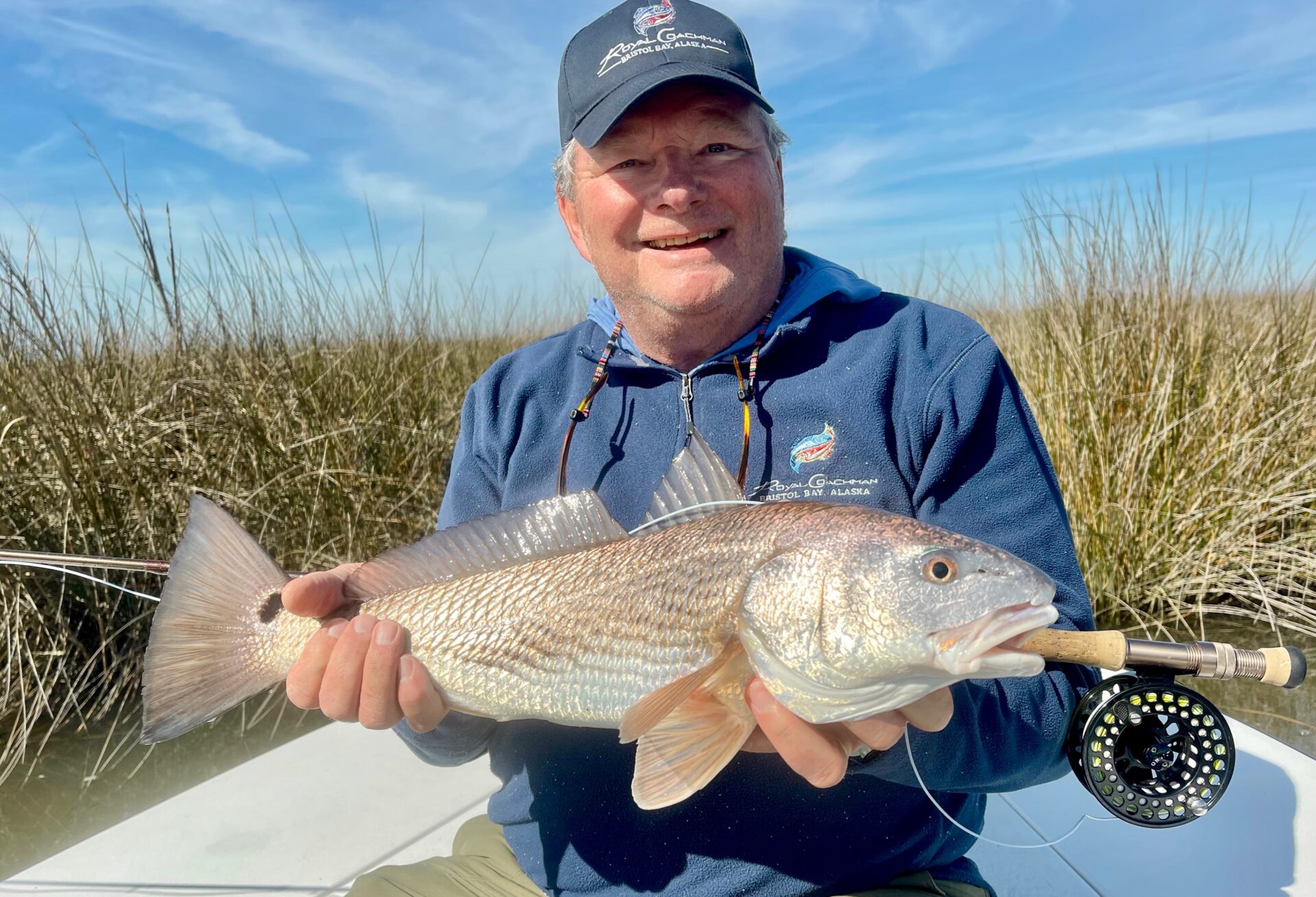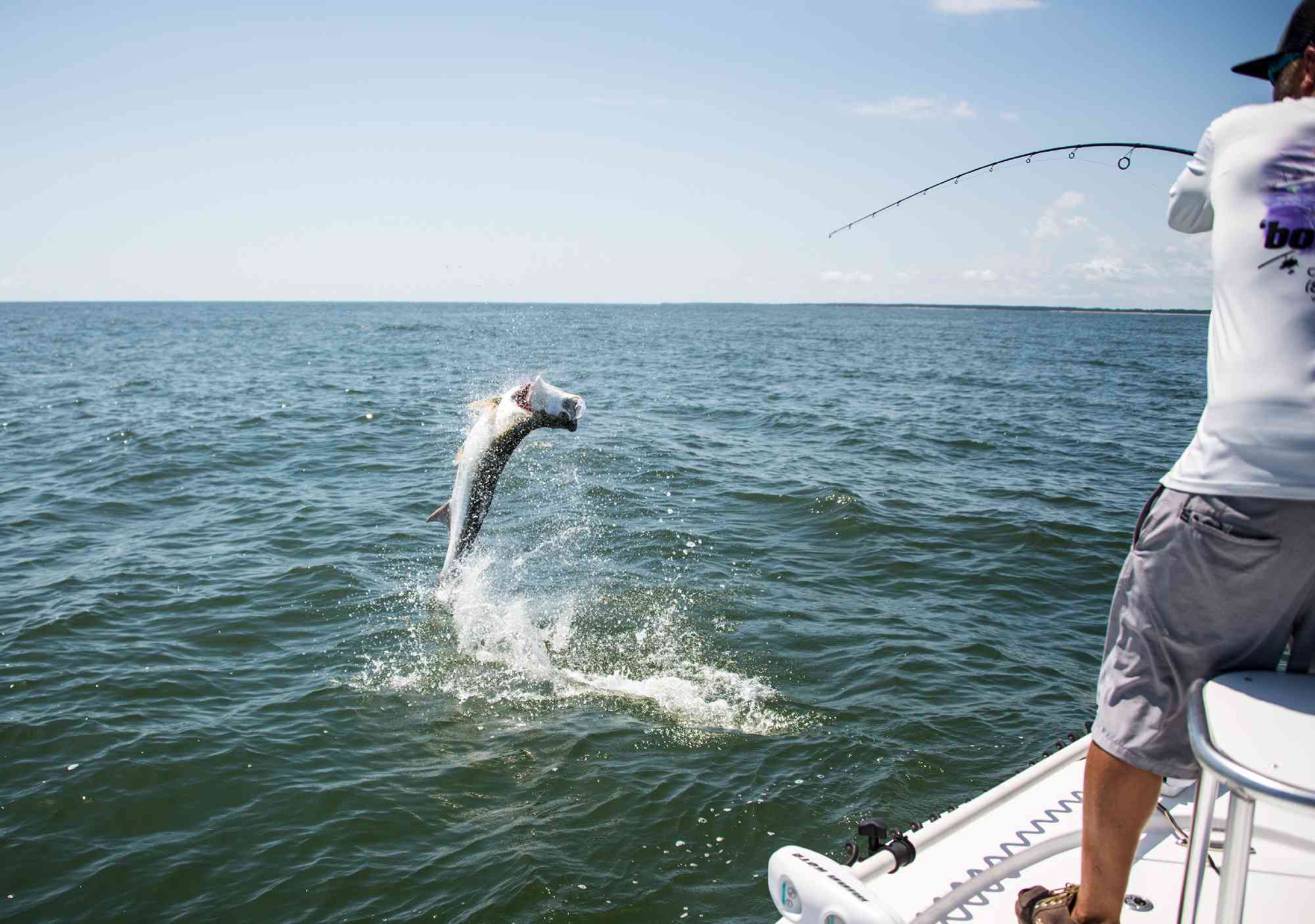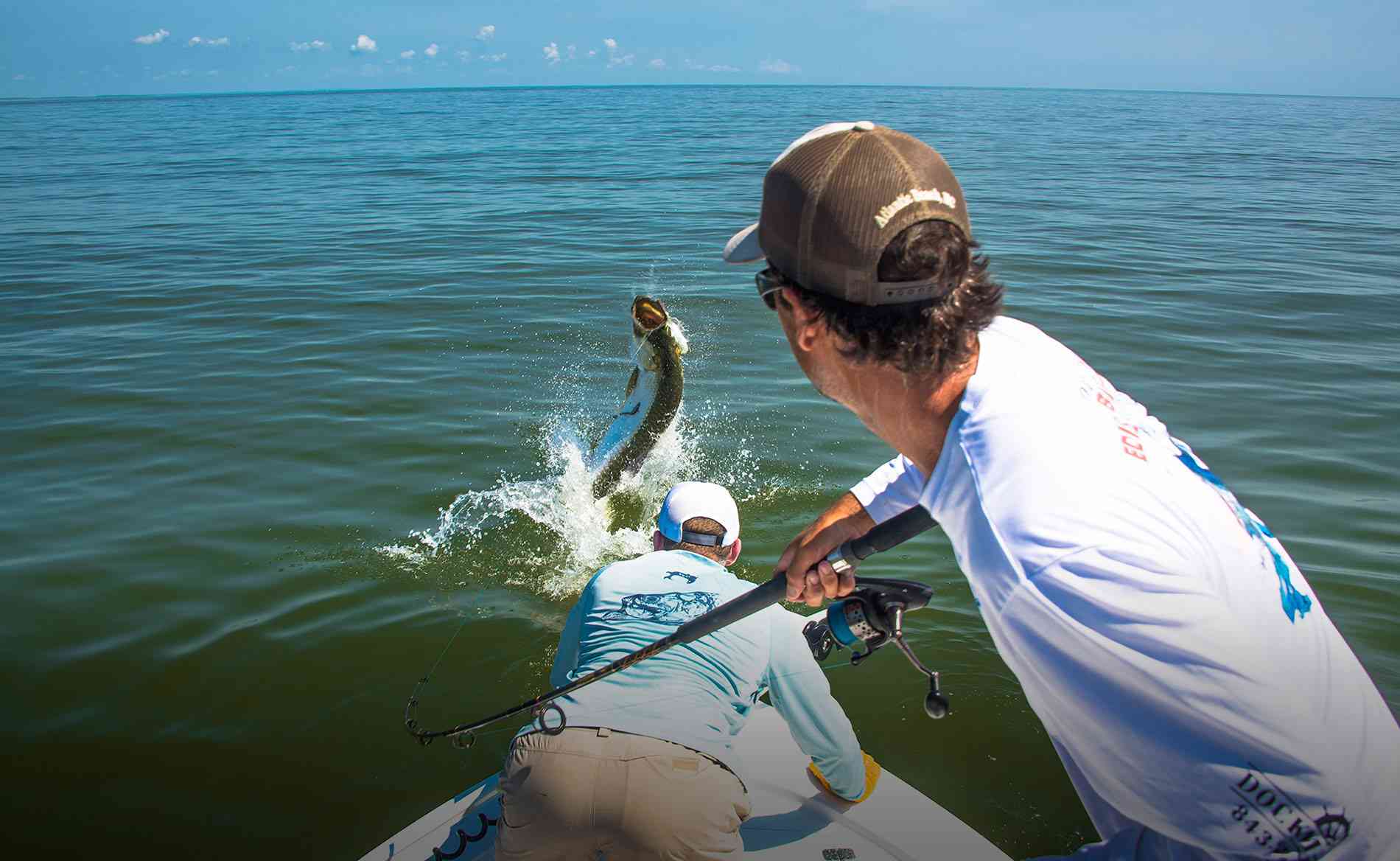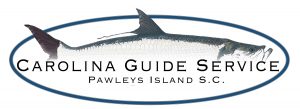Last Updated on February 21, 2025 by Eric Bonneman
Between the endless tidal flats, the backcountry creeks, and the expansive marsh systems, this stretch of the Lowcountry is one of the best places in the country to sight-fish for redfish—and if you time it right, even tarpon.
Fly fishing on the coast of South Carolina is an experience that’s hard to beat. But if you’re new to the area (or new to saltwater fly fishing in general), there are a few things you should know before booking a trip.
Why Fly Fishing the South Carolina Coast is Special
The Lowcountry is famous for its incredible redfish population. Unlike other parts of the country where reds move offshore or spread out, South Carolina’s fish stick around year-round, giving fishermen plenty of bite.
Naturally, the combination of shallow flats, oyster bars, and flooded marshes makes for some of the most exciting fly fishing you can find. And while the tarpon don’t stick around all year like reds, the summer months bring migratory tarpon up the coast, giving fly fishermen the shot at one of the most sought-after game fish in the world.
What Makes Redfish a Perfect Fly Fishing Target

Redfish (Red Drum) are built for fly fishing. They tail in shallow water, they eat flies aggressively, and they can be sight-fished most of the year. Whether you’re hunting them on a flood tide in the grass or watching them school up in the winter, reds reward patience and a well-placed cast.
- Spring & Summer – This is prime time for flood tide fishing, especially in places like Georgetown and other spots along the Grand Strand. On high tides, reds will push into the spartina grass, hunting fiddler crabs. (This is when you get those classic tailing fish—heads down, tails up, feeding in inches of water.)
- Fall & Winter – The cooler months are when the redfish start to group up in big schools. If you want numbers, this is your season. These fish push onto the shallow flats, and when conditions are right, you can spot dozens (sometimes hundreds) at a time.
The Best Time for Tarpon on the Fly
Tarpon fishing trips in South Carolina really start in June and peak in July, August, and September. This is when these massive fish are migrating through, giving fly fishermen a shot at one of the most thrilling fights in fishing.

Tarpon require long, accurate casts and a solid strip set to keep them hooked, but if you land one, it’s an experience you won’t forget.
Tip: In October, you can find tarpon, but it depends on the weather. A big cold front can push them south early, and hurricanes can make things tricky.
What You Should Know if You’re a Beginner
If you’ve never fly fished in saltwater before, it’s a little different from trout fishing. The mechanics are similar, but the approach is not.
- Casting – The ability to throw a long, accurate cast in the wind is crucial. You don’t need to be perfect, but the better your cast, the more chances you’ll have at fish.
- Strip Setting – This is the biggest adjustment for freshwater fishermen. Unlike trout, you don’t lift the rod to set the hook. You strip set—meaning you pull the line tight with a firm, deliberate motion. This ensures the hook drives in, especially with tougher-mouthed fish like redfish and tarpon.
- Stealth & Patience – Saltwater fly fishing is a hunting game. It’s about spotting the fish, positioning yourself correctly, and making the right presentation. Sometimes, it takes multiple shots.
If you’re brand new, don’t worry—your guide will help you every step of the way. But if you can practice a bit before your trip, it’ll give you an edge.
Booking Your South Carolina Fly Fishing Trip

No matter the season, the Carolina coast has something to offer fly fishermen. Whether it’s spring fly fishing, tailing bull redfish in the fall, schooling fish in the winter, or hunting tarpon in the heat of July, there’s really no shortage of great fishing here.
If you’re ready to experience fly fishing in South Carolina, the first step is booking the right charter. A good guide makes all the difference, from knowing the tides to putting you in the best possible position for success.
Tip: Most trips are limited to 1 or 2 fishermen to keep weight down and maximize your chances. The shallower the water, the better the fishing, and keeping the skiff light helps get you into the best spots.
If you’re ready to get out on the water and experience some of the best inshore fishing South Carolina has to offer, book a trip with Captain Jordan Pate at Carolina Guide Service. He knows these waters like the back of his hand and will put you on the fish, whether you’re chasing tailing reds in the grass or looking for schools in the shallows.
Lock in your spot and see for yourself why they say the Lowcountry is a fly fisherman’s dream! Call 843-814-7900 or click here to book online!
